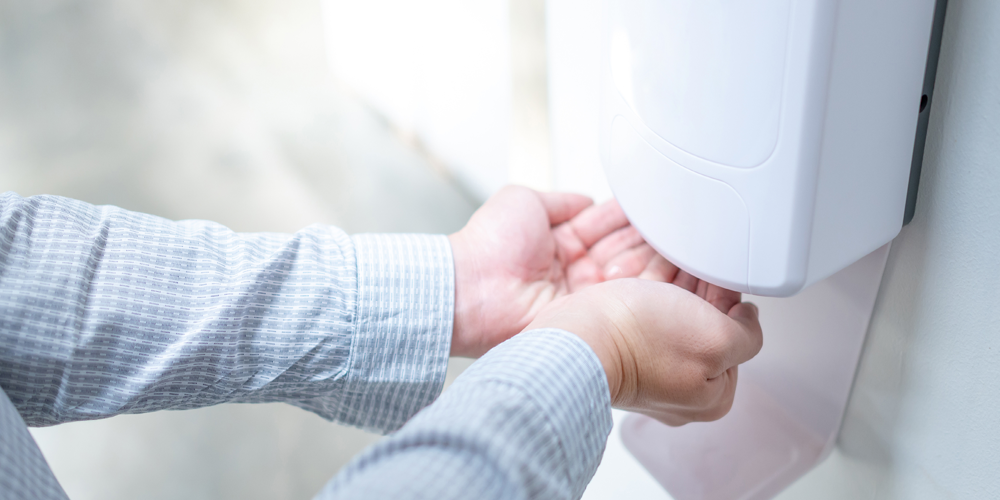Cleaning Products to Help Combat COVID-19
The COVID-19 pandemic has fundamentally altered our approach to hygiene and cleanliness. One of the key strategies in mitigating the spread of the virus is maintaining a clean environment. This guide explores various cleaning products that are effective in combating COVID-19, their proper usage, and safety considerations.
Understanding COVID-19 and Surface Transmission
COVID-19, caused by the SARS-CoV-2 virus, primarily spreads through respiratory droplets. However, it can also spread by touching surfaces contaminated with the virus and then touching the face. This makes cleaning and disinfecting surfaces crucial in reducing the transmission.
Categories of Cleaning Products
Disinfectants
Sanitizers
Cleaners
Natural Cleaning Alternatives
1. Disinfectants
Disinfectants are chemical agents designed to destroy pathogens and microorganisms on surfaces. They are more potent than sanitizers and are essential in areas with a high risk of contamination.
Key Ingredients:
Alcohol: Ethanol and isopropyl alcohol are effective against a wide range of viruses, including SARS-CoV-2, when used in concentrations of 60-90%.
Bleach: Sodium hypochlorite, commonly found in household bleach, is a powerful disinfectant that can kill the coronavirus on surfaces.
Hydrogen Peroxide: At concentrations of around 3-6%, hydrogen peroxide is effective against a variety of pathogens.
Quaternary Ammonium Compounds (Quats): These are effective against bacteria and viruses and are commonly used in healthcare settings.
Usage:
Disinfectants should be applied to pre-cleaned surfaces.
Follow manufacturer instructions for contact time and dilution.
Ensure proper ventilation when using strong chemicals like bleach.
Popular Products:
Lysol Disinfectant Spray
Clorox Disinfecting Wipes
Purell Professional Surface Disinfectant
2. Sanitizers
Sanitizers reduce the number of microorganisms to safe levels but may not eliminate all viruses and bacteria. They are typically used on hands and food-contact surfaces.
Key Ingredients:
Alcohol-based Sanitizers: Must contain at least 60% alcohol to be effective against SARS-CoV-2.
Benzalkonium Chloride: An alternative to alcohol that is effective against various pathogens.
Usage:
Apply an adequate amount to cover all surfaces of the hands.
Rub hands together until dry.
Popular Products:
Purell Hand Sanitizer
Germ-X Hand Sanitizer
Ecolab Food Contact Surface Sanitizer
3. Cleaners
Cleaners, or detergents, remove dirt, grime, and impurities from surfaces. While they don’t necessarily kill pathogens, they are essential for maintaining a clean environment, which is a precursor to effective disinfection.
Types:
All-Purpose Cleaners: Suitable for a variety of surfaces.
Glass Cleaners: Specifically formulated for windows and mirrors.
Degreasers: Designed to tackle oily and greasy residues.
Usage:
Apply cleaner to the surface and scrub if necessary.
Rinse with water and dry the surface.
Popular Products:
Mr. Clean Multi-Surface Cleaner
Windex Glass Cleaner
Dawn Powerwash Spray
4. Natural Cleaning Alternatives
For those looking for eco-friendly and less harsh cleaning solutions, natural alternatives can be effective when used correctly.
Ingredients:
Vinegar: A mild acid that can help clean and deodorize.
Baking Soda: A mild abrasive that can aid in scrubbing.
Essential Oils: Some, like tea tree oil, have antimicrobial properties.
Usage:
Mix vinegar and water in a 1:1 ratio for an effective cleaner.
Use baking soda paste for scrubbing tough stains.
Add a few drops of essential oils to cleaning solutions for added benefits.
Popular Products:
Seventh Generation Disinfecting Multi-Surface Cleaner
Method All-Purpose Cleaner
Mrs. Meyer’s Clean Day Multi-Surface Everyday Cleaner
Proper Cleaning and Disinfecting Protocols
1. Identify High-Touch Surfaces:
Focus on areas that are frequently touched, such as door handles, light switches, countertops, and electronic devices.
2. Cleaning Before Disinfecting:
Always clean surfaces with soap and water or appropriate cleaners before applying disinfectants to remove dirt and debris.
3. Use Appropriate Products:
Ensure you are using EPA-approved disinfectants for SARS-CoV-2.
4. Follow Instructions:
Pay attention to the contact time required for disinfectants to be effective. This can vary from a few seconds to several minutes.
5. Safety Precautions:
Wear gloves and masks when cleaning and disinfecting.
Ensure good ventilation.
Store chemicals out of reach of children and pets.
Safety Considerations
Chemical Safety:
Avoid mixing cleaning products, especially bleach with ammonia or vinegar, as this can create toxic fumes.
Store chemicals in their original containers with labels intact.
Personal Safety:
Wash hands thoroughly after cleaning.
Use protective gear, such as gloves and masks, to prevent exposure to harmful chemicals.
Specific Use Cases and Tips
For Homes:
Clean and disinfect high-touch surfaces daily.
Use alcohol-based wipes or sprays for electronics, but avoid oversaturation to prevent damage.
For Offices:
Implement regular cleaning schedules.
Provide hand sanitizers and disinfectant wipes for employee use.
For Schools:
Clean and disinfect classrooms daily.
Focus on shared items like desks and computers.
For Public Spaces:
Increase the frequency of cleaning for restrooms and communal areas.
Ensure availability of hand sanitizing stations.
The battle against COVID-19 requires diligence and the right cleaning products to ensure environments remain safe and sanitary. Understanding the differences between cleaners, sanitizers, and disinfectants, and their appropriate usage, is key to effective hygiene practices. By following proper protocols and safety measures, we can significantly reduce the risk of virus transmission and protect public health.
Regular cleaning and disinfection, combined with other preventive measures like hand hygiene and mask-wearing, form a comprehensive approach to combating COVID-19. Stay informed, stay safe, and keep your environments clean.
